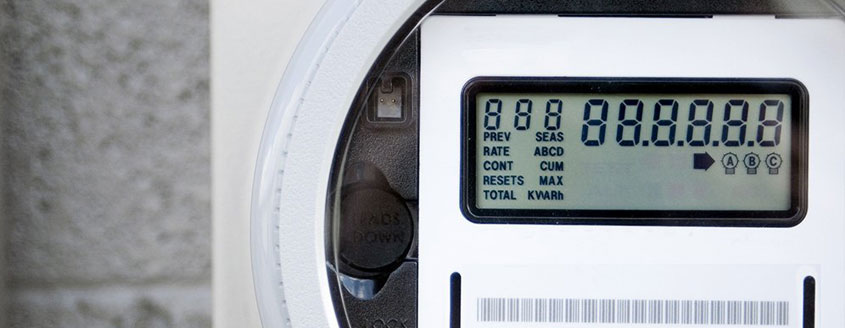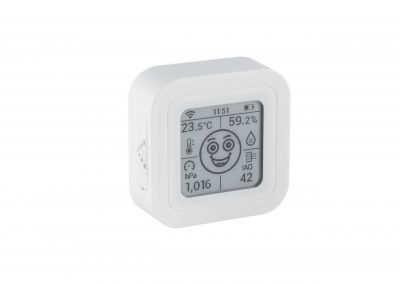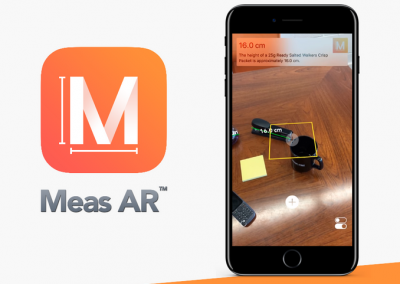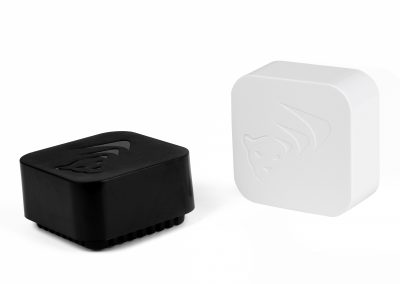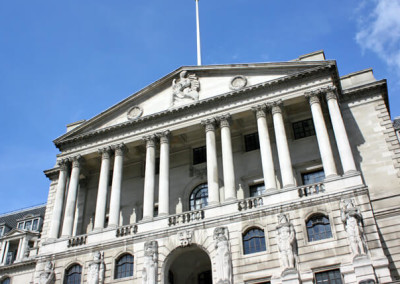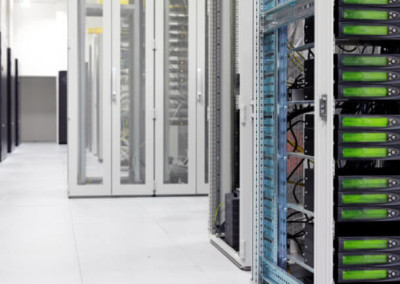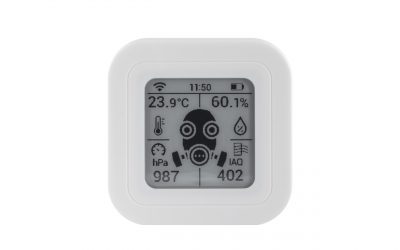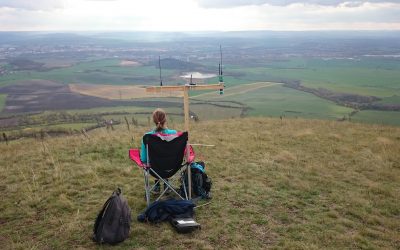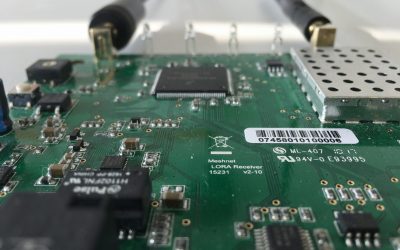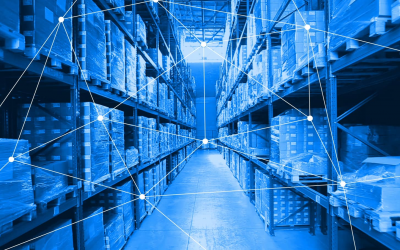Mesh-Net Ltd is a specialist wireless product development company. Our experience in this field includes AMR (walk-by, drive-by and fixed networks) as well as development of monitoring network, reading remote meters via mobile networks and development of web application to provide a complete turn-key solution.
We work with our clients to design their ideas from concept to manufacturing.
Contents
In Summary
Australia
Brazil
Canada
China
France
Germany
India
Italy
Japan
Netherlands
New Zealand
Spain
United Kingdom
Ireland
Technology
Protocols
Data Management
Advanced Metering Infrastructure
Radiation and Health Issues
Privacy
Lack of Savings
In Summary
The term Smart meter often refers to an electricity meter, but it also may mean a device measuring gas or water consumption.
Similar meters, usually referred to as ‘interval’ or ‘time-of-use meters’, have existed for years, but “Smart Meters” usually involve real-time or near real-time sensors, power outage notification, and power quality monitoring. These additional features are more than simple automated meter reading (AMR). They are similar in many respects to Advanced Metering Infrastructure (AMI) meters.
Many confuse smart meters with energy monitors, also known as in-home display monitors. The roll-out of smart meters is one strategy for energy savings. While energy suppliers in the UK could save around £300 million a year from their introduction, consumer benefits will depend on people actively changing their energy use. For example, time of use tariffs offering lower rates at off-peak times, and selling electricity back to the grid, may also benefit consumers.
Since the inception of electricity deregulation and market-driven pricing throughout the world, utilities have been looking for a means to match consumption with generation. Traditional electrical and gas meters only measure total consumption, and so provide no information of when the energy was consumed at each metered site. Smart meters provide a way of measuring this site-specific information, allowing price setting agencies to introduce different prices for consumption based on the time of day and the season. Smart meters may include measurements of surge voltages and harmonic distortion, allowing diagnosis of power quality problems.
Utility companies propose that from a consumer perspective, smart metering offers a number of potential benefits to householders. These include, an end to estimated bills, which are a major source of complaints for many customers and a tool to help consumers better manage their energy use – stating that smart meters with a display outside their homes could provide up-to-date information on gas and electricity consumption.
In doing so help people to manage their energy use and reduce their energy bills and carbon emissions as billing by time-of-day will encourage consumers to adjust their consumption habits to be more responsive to market prices and assert further.
Australia
The Essential Services Commission’s (ESC) Final Paper titled “Mandatory Rollout of Interval Meters for Electricity Customers” foreshadowed the changes to be implemented and contained the rollout timetable requiring interval meters to be installed for all small businesses and residences. The rollout commenced in mid-2009 and is forecast to be completed by the end of 2013.
Digital Smart Meters are being rolled out by Victoria’s five electricity distributors – CitiPower, Powercor, Jemena, United Energy and SP AusNet – who own and manage the poles and wires that deliver power to homes and businesses across Melbourne and throughout the state.
Electricity meters are the property of the distribution businesses. As such, the businesses are allowed to replace their equipment, and there is an obligation on a property owner to provide reasonable access to their property for this to occur.
September 2013 – Queensland’s government proposed a customer-driven rollout of advanced meters for the state, in which a range of different service providers can compete to offer customers advanced metering services and associated product choices, and customers can choose to adopt the technology based on their own assessment of the benefit.
Brazil
August 2013 – Itron announced, the Openway CENTRON residential smart meter received certification by Inmetro for the Brazilian market. The meter addresses a number of needs including smart payment, distribution generated and “white tariff” or dynamic pricing capabilities. The meter addresses the upcoming market requirement for accurate time-of-use pricing while also enabling customers to prepay for electricity and integrate renewable energy sources onto the grid.
Canada
The Ontario Energy Board in Ontario, Canada has worked to define the technology and develop the regulatory framework for its implementation. The Government of Ontario set a target of deploying smart meters to 800,000 homes and small businesses (i.e. small “general service” customers under 50 kW demand) by the end of 2007, which was surpassed, and throughout the province by the end of 2010. BC Hydro in British Columbia, Canada is implementing Itron smart meters to all customers by the end of 2012.
In November 2011, the Union of British Columbia Municipalities voted in favour of a moratorium to temporarily suspend smart meter installations. As of May 2012, 39 municipalities in British Columbia have passed motions opposing the installation of smart meters.
In January 2013, BC Hydro confirmed that it is not going to install smart meters without the permission of residents. The power company has already installed 95 per cent of the high-tech devices, and it is going to take some extra time to work with the remaining 85,000 customers who have refused the new meters.
In April 2013, Opponents of smart meters are preparing a class action lawsuit against BC Hydro, alleging installation of the high-tech devices has led to thousands of health, safety and privacy concerns over the last two years.
July 2013 – FortisBC received approval for its smart metering rollout, proposing to replace approx. 80k electromechanical and 35k digital meters for residential and commercial customers. No start date for the roll-out announced yet and FortisBC will work with customers to address concerns and provide options.
China
May 2013 – A new report by IHS’ iSuppli China Research arm says new technical standards for smart meters – due to be introduced in August – will pave the way for the market to pass the 100 million units shipped mark for the first time as traditional electricity meters are largely phased out by 2016.
IHS says of the 110.6 million meters shipped last year, 98.5 million were smart meters with the State Grid Corporation of China including 76 million smart systems among the 78.3 million meters it acquired and the China South Grid including 1.18 million smart meters among the 5.9 million units it acquired.
On 9th May, Beijing Power Company of SGCC started the smart meter replacement project of 2013, planning to install 1.2 million meters in 2013, covering about 1500 communities. By end of 2015, 6.3 million meters may be installed in Beijing.
Beijing Power Company of SGCC started to promote smart meter from 2011, in the last 2 years, 1.9 million smart meters were installed in Beijing. There are still 4.4 million households are using prepaid IC Card meters and most of them are reaching the service life. To meet the needs of the users and to promote the smart city construction, Beijing Power Company planned a 3-year project to replace all the meters in Beijing from 2013 to 2015.
France
A smart metering pilot project is being conducted by Electricité Réseau Distribution France (ERDF) involving 300,000 clients supplied by 7,000 low-voltage transformers. In June 2008 ERDF awarded the AMM pilot project to a consortium managed by Atos Origin, including Actaris, Landis+Gyr, and Iskraemeco. The aim of the trial is to deploy 300k meters and 6k concentrators in two distinct geographic areas, the Indre-et-Loire (37) department and the Lyon urban region (69). This project affecting 1% of LV customers is a precursor to national deployment for 35 million clients in France. The experimentation phase started in March 2010.
Jan 2013 – The French Data Protection Authority (the “CNIL”) has issued initial recommendations to regulate the use and deployment of smart meters following a two year review on this issue. Smart meters will start being deployed across France in 2013 and by 2020 should be installed in approximately 35 million homes.
The CNIL reports that smart meters pose potential issues in terms of security and privacy, with the ‘load curve’ singled out for specific attention. The load curve takes regular measurements of usage, allowing for detailed and accurate information on the lifestyles of the residents of a particular home. This data could therefore be used to determine, amongst other things, time of peak usage and, of more concern, what time the residents go to bed or wake up, and times when the home is regularly empty.
July 2013 – French Prime Minister Jean-Marc Ayrault announced the go-ahead of the country’s smart electricity metering rollout, with the first phase of 3 million smart meters to be deployed by 2016. The full nationwide rollout of 35 million smart meters will be completed by 2020, with an investment of €5 billion. Announced as part of a new “Invest in France” plan at the Pierre and Marie Curie University, Prime Minister Ayrault said a tender for 3 million Linky meters would be issued by ERDF during the summer.
September 2013 – GrDF awarded two three-year contracts worth a total of €23 million to Capgemini to develop the information system for France’s smart gas meter rollout to 11 million homes by 2022. The rollout will be the world’s largest gas meter deployment to date will begin in 2015. The Gazpar smart meters will provide GrDF customers with real time knowledge of their exact energy consumption, enabling them to monitor and control their energy bills more effectively
Germany
August 2013 – The Federal Ministry of Economics and technology (BMWI) has advised a national smart electricity metering rollout would not be cost beneficial for Germany. The ministry said a study shows that especially for consumers with low annual consumption, the costs of smart metering would significantly exceed the average annual energy savings to be achieved. The statement said that rather than a flat line approach, there should be a targeted approach to expansion of smart metering in Germany that is in line with the energy policy.
India
A Committee was constituted by the Ministry of Power to finalize the functional requirement specifications for cost-effective single phase smart meters. The Committee has finalized functional requirement specifications for cost effective single phase meters so that integrated chip having communication module can be developed and a large scale roll out of meters is possible.
The Committee report that an AMI model that has a good chance of working out in the Indian Context would consist of:
Smart Meter:
LAN/WAN communication over RF mesh/PLCC/GPRS,
Network Management System (NMS)
Home area network supporting in Home Display over Zigbee/PLC
The reading frequency proposed is once in 24 hours automatically. Alarms are to be communicated on their occurrences. On demand meter reading facility to be available. Most schemes are currently being installed as pilots.
March 2013 – Itron Inc., said smart meters installed in Mumbai reduced water losses by half. Smart meter use in India’s most populous city eliminated 50% of the 700 million litres a day of water that’s wasted or leaked by broken pipes.
Mumbai installed the meters, which can be read remotely, to help improve supplies from a system that provides tap water to half of the city’s 13 million residents for a few hours a day and no water at all for everyone else. About 50% of Mumbai’s potable water is lost compared with an average of 34% worldwide and about 10% for the most efficient water systems.
Italy
Italy has already deployed a large number of smart electrical meters. Legislation has recently been released, forcing gas utilities to deploy smart gas meters from large industrial consumers down to almost every residential customer by the end of 2016.
It is expected and desired, that remote reading and management of smart gas meters will be fully independent of the existing system of smart electrical meters. The technology intended to be used, mainly, will be radio-based.
Enel, which has placed 40 million meters worldwide since 2001, has invested 2 billion euros ($2.6 billion) in installing 34 million with its own clients, saving 500 million euros a year.
Enel are investing to install meters in Spain and Latin America. It also aims to deploy in Romania and has piloted its technology with utilities in Russia, the Philippines, Hong Kong and China.
Gas meters are also smartening up. Italy’s regulator wants digital gas meters to be rolled out from 2014. Distributors like Italgas, owned by Snam, have already carried out trials with suppliers to test this technology.
Japan
The Energy Conservation Centre in Japan promotes energy efficiency including smart metering. Public utilities have started to test metering with integrated communication devices. Private entities have already implemented efficient energy systems with integrated feedback methods such as alerts or triggers.
The GoJ plans to roll-out smart meters to 80% of nationwide electricity consumption over the next 10 years, with demand for smart meter expected to reach around 70 million units, a Japanese domestic market value of more than 700 billion Yen (£5.2bn). TEPCO and the GoJ-backed Nuclear Damage Liability Facilitation Fund plan to install 27 million smart meters from 2014 to 2023.
To reduce the cost of the project TEPCO will adopt international standards for smart meter specifications. This decision has created opportunities for foreign firms to enter the Japanese smart meter market.
In May 2013, Tokyo Electric Power Co. announced it will tie up with Toshiba Corp. and NTT Data Corp. to develop a system for next-generation “smart meters” that enable utilities to accurately monitor electricity demand and efficiently manage supply. Toshiba will be responsible for the meters’ communication system, which will be operated and managed by NTT Data. With smart meters, consumers can check how much power household appliances consume at any time.
Netherlands
The company Oxxio introduced the first smart meter for both electricity and gas in the Netherlands in 2005. In 2007, the Dutch government proposed that all seven million households of the country should have a smart meter by 2013, as part of a national energy reduction plan.
In 2008 the roll out of these seven million meters was delayed. In 2009 the Dutch government had to back down after consumer groups raised privacy concerns. Instead of a mandatory roll-out, smart meters will be voluntary.
New Zealand
In November 2005, energy supplier Meridian Energy introduced the usage of smart meters with more than 1000 households participating. By late 2006, over 6,300 smart meters had been installed as part of the initial trial. On June 28, 2007 the first roll-out began for households and there were plans to install more than 112,000 smart meters by January 2009.
In 2009, the Parliamentary Commissioner for the Environment released a report, which was critical of the “lack of smartness” in the smart meters installed as the meters were capable of being smart, but that the failure to include the HAN chips at the initial installation meant that currently only the power retailers benefited, not consumers, nor the environment.
August 2013 – SmartCo, selected Landis+Gyr as a preferred smart meter vendor for the deployment of its advanced network planned for roll out across the country. The solution brings together, the electricity distributors and retailers for greater operational efficiency such as remote reading of meters, real time notification of outage, power quality and load control solutions.
Spain
Based on the Royal Decrees a meter substitution plan was established with an obligation to install smart meters for all consumers under 15 kW by 2018; by 31 December 2010, 30% of the contracts from each distribution company below 15 kW should have the smart meter installed; distribution companies are responsible for the installation of the meters.
In May 2013, Endesa reports it has replaced 30% of traditional meters and installed more than 3.5 million smart meters, making it the country’s leader in remote management.
According to Endesa (a subsidiary of the Enel Group), the implementation of its smart metering plan in Spain is based on the technology successfully deployed by Enel in Italy, which utilizes the Meters and More technology. Endesa is also setting up concentrator devices that operate meters automatically and remotely, communicating with them via the electricity grid and using a power line communications (PLC) protocol.
July 2013 – Itron announces completion of Iberdrola’s Smart Meter program, started in 2010, focused on developing a new open and interoperable solution based on the PRIME telecommunications protocol. Currently reading more than 1 million PRIME meters per day and expecting to reach deployment and management of 2 million meters by Q1 2014.
August 2013 – The European Investment Bank (EIB) has concluded loan agreements totalling €675m with Gas Natural Fenosa and Iberdrola Distribution Electrica SA to support modernisation of the two utilities network and their installation of smart meters throughout Spain. Program includes installation of up to 1.8m new digital electricity meters.
United Kingdom
In December 2009, the United Kingdom’s Department of Energy and Climate Change announced its intention to have smart meters in all homes by 2020. The principal means of communication in the Home Area Network was likely to be ZigBee Smart Energy.
The United Kingdom rollout is considered to be the largest programme ever undertaken – involving visits to more than 27 million homes to replace meters for both gas and electricity. The rollout officially started in 2012, but some energy suppliers started installing smart meters in people’s homes before this. In January 2010, there were estimated to be in excess of 170,000 domestic smart meters installed.
Ofgem had initially published the following challenging rollout timetable (now all changed):
Spring 2011: Enhanced consumer protections in place – it is unclear yet what this will include except new safeguards around remote disconnection and remote switching.
Summer 2011: Functional requirements and specifications confirmed.
Summer 2012: Go-Live rollout mandated to start.
Autumn 2014: Full rollout with the data communications entity in place – Go-Live DCC for domestic customers expected to be completed.
Consumer groups were concerned that little consideration appears to have been given to the experience of customers who receive meters before ‘Go-Live’ and that currently there is no monitoring framework in place. Government is still consulting on minimum standards for displays, meters, and the customer experience. There has also been concern that consumers may experience pressure selling while energy reps are in their homes fitting meetings.
In May 2013, the government announced, the introduction of energy smart meters in 30 million UK homes will be delayed for more than a year. The £11.7bn project will start in the autumn of 2015, rather than 2014, the Department of Energy and Climate Change (DECC) said. It said that the industry needed more time to design, build and test the communications system required. Now, the programme to install these meters into every UK home is expected to be finished by 2020, also a year later than planned.
The DECC has published a guide that can be viewed on:
https://www.gov.uk/smart-meters-how-they-work
In July 2013, British Gas reported installing its millionth smart meter as part of Britain’s nationwide rollout that will see all current gas and electricity meters replaced by 2020.
August 2013 – Sensus, Arqiva, Telefonica win UK Smart Meter Communications contracts and would appear cellular and Sensus FlexNet takes preference over mesh technology. The UK has taken a different approach than most other countries deploying smart meters, by clearly dividing the rollout between smart meters and providers of the communications links.
September 2013 – British Gas and Landis+Gyr announce £600m smart meter deal. Majority of the British Gas 16m smart meters to be supplied by Landis+Gyr. British Gas have roles for Smart Energy Experts who will install smart meters and provide energy efficiency advice to households and estimating a reduction in energy usage of 5% per household as a result.
Ireland
July 2013 – Irish Water to start a rollout of more than 1 million AMR program. Approximately 27k meters to be installed each month and expect to complete by end of 2016. Meter vendor(s) have not been announced but in January Sensus announced progress in a smart meter trial with 100 percent connectivity to meters located underground, in County Cork.
Technology
Of all smart meter technologies, one critical technological problem is communication.
Each meter must be able to reliably and securely communicate the information collected to some central location. Considering the varying environments and locations where meters are found, that problem can be daunting.
Among the solutions are:
Mobile and Pager Networks
Satellite Networks
Licensed Radio (fixed or mesh networks)
Unlicensed Radio (fixed or mesh networks) – including Wireless MBUS, 868Mhz , 2.445G Zigbee
Power Line Communication
Rural utilities have very different communication problems from urban utilities or utilities located in difficult locations such as mountainous regions or areas poorly served by wireless and internet coverage.
In addition to communication with the head-end network, smart meters may need to be part of a Home Area Network which can include an In-Premise Display and a hub to interface one or more meters with the head end.
August 2013 – In the UK, with the awarding of the first giant smart metering communications contracts, it would appear that cellular solutions, along with Sensus Flexnet communications technology (long range licensed-spectrum) have beaten out the wireless mesh contenders.
Protocols
IEC 61107 is a communication protocol for smart meters published by the IEC that is widely used for utility meters in the European Union. It is superseded by IEC 62056, but remains in wide use because it is simple and well-accepted. It sends ASCII data using a serial port. The physical media are either modulated light, sent with an LED and received with a photodiode, or a pair of wires, usually modulated by EIA-485. The protocol is half-duplex.
Open smart grid protocol – The Open Smart Grid Protocol (OSGP) is a family of specifications published by the European Telecommunications Standards Institute (ETSI) used in conjunction with the ISO/IEC 14908 control networking standard for smart metering and smart grid applications. Millions of smart meters based on OSGP are deployed world wide.
TCP/IP technology is a common communication platform for Smart Meter applications, so that utilities can deploy multiple communication systems, while using IP technology as a common management platform.
Data management
The other critical technology for Smart Meter systems is the information technology at the utility that integrates the Smart Meter networks with the utility applications, such as billing and CIS. This includes the Meter Data Management system.
It also is important for Smart Grid implementations that powerline communications (PLC) technologies used within the home over a Home Area Network (HAN), are standardized and compatible. The HAN allows HVAC systems and other household appliances to communicate with the smart meter, and from there to the utility.
Advanced metering infrastructure
Advanced Metering Infrastructure (AMI) are systems that measure, collect, and analyze energy usage, and communicate with metering devices such as electricity meters, gas meters, heat meters, and water meters, either on request or on a schedule. These systems include hardware, software, communications, consumer energy displays and controllers, customer associated systems, Meter Data Management (MDM) software, and supplier business systems.
Government agencies and utilities are turning toward advanced metering infrastructure (AMI) systems as part of larger “Smart Grid” initiatives. AMI extends current advanced meter reading (AMR) technology by providing two way meter communications, allowing commands to be sent toward the home for multiple purposes, including “time-of-use” pricing information, demand-response actions, or remote service disconnects. Wireless technologies are critical elements of the “Neighborhood Area Network” (NAN), aggregating a mesh configuration of up to thousands of meters for back haul to the utility’s IT headquarters.
Radiation and Health Issues
Could the radiation from smart meter networks affect your health and well-being ?
There’s no definitive answer at this stage because the technology is so new. But already there are task forces being proposed in various countries to look into this.
Smart meters networks operate using radiofrequency radiation to relay information about electricity usage. These signals are sent sporadically, either to a WiMax base station, or from one meter to another (the MESH system) till the information reaches the electrical utility.
Utilities claim that the emissions from smart meters are ‘low’. However, that doesn’t explain some reports of uncomfortable effects from those who have had smart meters installed on – or even near – their homes. They include headaches, nausea, heart palpitations, mental confusion, eye problems and sleep problems.
Privacy
EU Watchdog has warned of the “considerable risks” to privacy:
The European Data Protection Supervisor said safeguards were needed over how firms used the “massive collection” of consumers’ data uploaded by meters. It says consumers should have the option of deciding whether they share detailed information about their use of gas and electricity.
The technology may able to track when consumers are at home, how they spend their free time and even what medical devices they use.
Lack of savings
There are questions whether electricity is or should be primarily a “when you need it” service where the inconvenience/cost-benefit ratio of time shifting of loads is poor. In the Chicago area Commonwealth Edison ran a test installing smart meters on 8,000 randomly selected households together with variable rates and rebates to encourage cutting back during peak usage. It was reported that fewer than 9% exhibited any amount of peak usage reduction. and that the overall amount of reduction was “statistically insignificant”.
There is also concern in the UK about using the in-home displays as people could be given live information on their energy use via web links and smartphone apps much more easily.
In Germany, the BMWI has advised a national smart electricity metering rollout would not be cost beneficial for Germany.
Inder Panesar (MD, Mesh-Net Ltd)
Information Sources include: wikipedia.org, bbc.co.uk, metering.com, meteringchina.com….. others
Recent Projects
COVID-19 and Air Quality
At this present unprecedented time, the main topic for many discussions is COVID-19 and how it has affected your business and working methods. Data sources have shown concentrations of Nitrogen Dioxide (NO2), a pollutant mainly emitted by road transport have...
Renewables Business Analytics
Business Analytics (BA) is probably the most common terminology used in business today. It generally refers to collecting data within the business to help visualize their performance and make data driven decisions on improvements. It is a cyclic process of...
BluMesh Performance
What is BluMesh?BluMesh® is Mesh-Net’s new proprietary Bluetooth 5 mesh networking protocol developed for Industrial IoT (IIoT) applications including Smart Buildings, Lighting, Metering, Wireless sensor networks, Renewable Energy, Data Centers, Remote Monitoring,...
LoRa Line Of Sight Range Test
A few weeks ago we attempted a Line of Sight (LoS) range test for our LoRa transmitters and receivers but we soon ran out of LoS range (see https://www.mesh-net.co.uk/lora-range-tests/). As it is difficult to find several kilometers of LoS in London, we headed to the...
LoRa Range Tests
Not quite Line of Sight Test (869 Mhz LoRa) What started off as a Line of Sight (LoS) range test for our LoRa transmitters, soon became not quite LoS as we ran out of room. So we decided to keep on going... Through bushes - LoRa signal getting through without a...
Official Bluetooth Mesh Network
Bluetooth technology now supports mesh networking, unleashing the incredible potential of many-to-many communications. With Bluetooth mesh, tens, hundreds, or even thousands of devices can now connect to automate homes and businesses, create wireless sensor networks...

